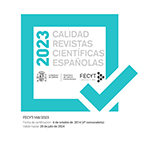Visibilidad pública y tratamiento informativo del movimiento de cooperación al desarrollo (1992-2002)
Abstract
During the 1990’s arises the biggest social movement linked to international solidarity and development in Spain. The activities involve three main campaignes. The initial one (1994) is focused on the symbolic demand of the 0,7% PIB budget, recommended by the UN in the 70’s. The second campaign (1988) displays a diversified repertoire of collective action pressing the parliamentary debates on the Law for International Cooperation in order no exert civil control on the foreign commercial relations. The third campaign (2000) was a process of social referendum about foreign debt of developing countries, parallel to the general elections of that year. The increasing political nature of the movement’s targets attains a different media treatment for each of the three periods. These differences manifest the changing nature of the media opportunity structure and the alliances between the political parties (whether in government or opposition) and the printed press. The analysis of the changing nature of the media -party- social movement relations account for thee deep transformations of the public sphere in the society of information and its effects on the civil society initiatives in democratic societies.Downloads
Article download
License
In order to support the global exchange of knowledge, the journal Política y Sociedad is allowing unrestricted access to its content as from its publication in this electronic edition, and as such it is an open-access journal. The originals published in this journal are the property of the Complutense University of Madrid and any reproduction thereof in full or in part must cite the source. All content is distributed under a Creative Commons Attribution 4.0 use and distribution licence (CC BY 4.0). This circumstance must be expressly stated in these terms where necessary. You can view the summary and the complete legal text of the licence.











